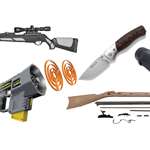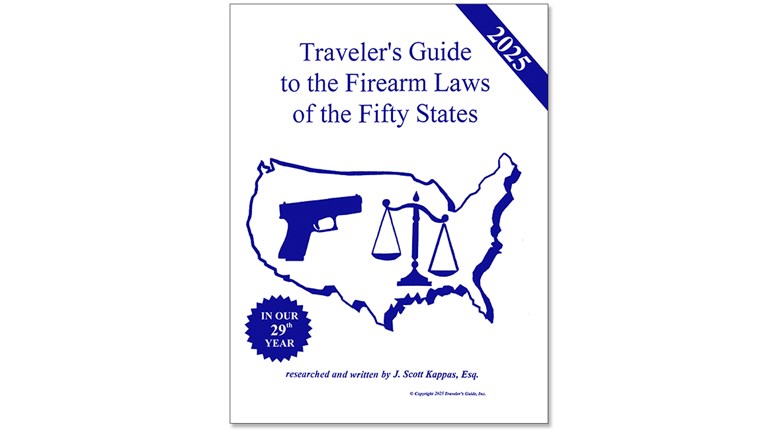I’m not so naïve as to assume tension still lingers in Europe decades after two world wars ravaged the continent. But when Frenchmen, Swedes, Brits and Germans gather, one wonders whether they shy away from certain subjects. Like invasion, for instance.The notion was put to rest the first night when our host, Thierry Daguenet, proposed a toast.
“Gentlemen,” he said, “I would like to welcome you all to Poland. Some of you are new here, but of course, Klaus, we all know the Germans have been to Poland many, many times before.”
“Yes,” shouted Klaus over guffaws, “but that was with a different caliber!”Indeed the men in my presence worked together, or at least knew each other in some capacity, so perhaps I should have known better. Regardless, I was reminded that among hunters, no barrier exists that can’t be transcended.
Well, except maybe a language barrier.
Hours earlier, I exited the plane at the Frankfurt airport and stood alone, unable to speak a lick of anything besides English, wondering how long I had to look forlorn before someone took pity on me.
“Thierry?” asked a gentle-looking mustachioed man.
“Yes, Thierry,” I replied anxiously. “You know Thierry?”
“Yes, yes,” said the man, our driver, apparently. Or at least that’s what I imagined he said as he nodded in the affirmative and waved for me to follow him.
“Thierry” was Thierry Daguenet, vice president of RUAG Ammotec Sales Companies in Europe. RUAG is a European conglomeration of sporting arms companies and defense contractors not unlike ATK on these shores. RUAG owns Norma Precision, the company that invited me to Poland. But it was Thierry, a Frenchman, with whom I had corresponded before my arrival. He arrived in due time, along with two other Frenchmen: Christophe Skladzien, sales manager of RUAG France; and Yann Richard, director of publications for Mondadori France, which publishes several gun and hunting magazines. From Norma Precision there was Torb Lindskog, the company’s CEO. Also from Sweden was Torb’s son, Jonas; Gunnar Gloersen, a game manager from the Swedish Hunters’ Association who specializes in working with large carnivores; and Anders Grahn, director of public affairs for the association. Klaus Waltermann was the German with the sharp wit; he is sales manager of RUAG Ammotec Germany. One Brit also landed: Phil Unwin, managing director of RUAG UK. Including me, everyone spoke English. I could satisfactorily communicate, or so I thought.
Each year the RUAG crew gathers in Swiebodzin, Poland, to shoot driven game, mostly big hairy hogs but also roe deer, red stags, foxes, badgers and from what I could tell just about anything else chased out of the woods by the men who beat the bushes, so long as the hunt master says it’s on the list, which varies depending upon the day and the location of each drive. I’d never done such a hunt, so I was eager to experience it, language barrier notwithstanding.
Our interpreter, Ania Plaskacz-Luciuk, spoke her native Polish, French and a bit of Russian, but no English. So I stood there like a half-wit the first morning while she listened to our hunt master, Hubert, explain the plan in Polish then translated it to French for Thierry, who explained everything to me and others who didn’t speak French. Convoluted, sure, but it worked.
On the second drive of the day, I was watching the woods I was told to watch when a car approached. Who was it? Would they ask for a hunting license? Maybe a permit for the gun on my shoulder? I had neither. Just about the time I was wondering whether somebody said something about “stop and frisk” in a language I couldn’t understand, I heard shuffling behind me.
I was wearing electronic ear muffs, something I’d never do if I expected to fire only a shot or two at big game. But I figured the shooting could be fast and furious and I didn’t want to go deaf. Trouble is electronic muffs amplify every sound, so there’s no telling what you’re hearing.
Imagine my surprise when I spun and saw, less than 40 yards from me, about 20 pigs. Big ones, medium ones and little ones. Hubert said we could shoot as many as we wanted. So I tried. I fired first at the biggest one, a female, and she ran past me into the woods. Sure she was mortally wounded, I worked the bolt on the Merkel and fired again, this time at a little one—the only one standing still at that point—and then again as it ran away.
When the truck arrived I explained the scene to Hubert, mostly with pointing and gesturing. We found the big female exactly where I said she’d run, dead in the woods. (After we left the beaters found the little one, too.)
I climbed in the truck and accepted congratulations, any worries I had about upholding the heritage of American marksmanship put to rest.
In Poland, the land and the game is owned by the state. Any game shot remains the property of the state, and is distributed accordingly. Hunters contract with companies that lease exclusive hunting rights licensed by the state. Hunt masters are state employees, in effect biologists/game wardens who keep tabs on their areas of control to determine how much of what species may be hunted, and when. They map out the hunt, and how we will line out in the woods during each drive. To beat the woods they hire locals, who are paid about $15 a day. Many of the locals bring their dogs, none of which are exactly what you’d call hunting breeds.
The first day some kind of Eastern European military surplus truck ferried us to each setup. It was very cool; I’d have taken a picture of it if I knew it was the last day I’d ever see it. The second day we piled into a couple tiny vans, also clearly of Eastern European design. They weren’t so roomy. The third day we were ferried by Land Rovers owned by the hunt master, a Kazakh named Alexander Asanowicz who carried a Glock on his hip.
Each hunter had individual flourishes (like Klaus and his hat), but overall I was surprised to see more people than I expected in camouflage and hunter orange. Most of the men sported European rifles and cartridges—and fired Norma ammo, of course. Interestingly, though, good old American cartridges hold their own in the Old Country.
Two Swedes “stuck to their guns,” as it were. Gunnar carried a Tikka M65 in 6.5x55 mm. (“I’ve taken a hundred moose with it,” he said.) Anders carried a Sako Finnlight in .270 Win. Torb carried a Sauer 202 in .30-06. Jonas carried a Weatherby Mark V in .300 Wby. Mag. Klaus, the German, fittingly carried a Heym in 9.3x62 mm. Phil shot an Austrian Roessler in .30-06. Christophe carried a thing of beauty, a Chapui double in 8x57 mm. Thierry carried a Merkel RX chambered in 7 mm Rem. Mag. Yann brought two German guns: a straight-pull Blaser R93 in .270 WSM, and a straight-pull Merkel RX in 7x64 mm he loaned me.
I’d fired a Merkel RX at a shooting event in the States earlier in the year, so I recognized the gun when Yann pulled it from the case. The RX has nice lines. It shoulders quickly. It’s got a removable magazine, ideal when you’re climbing in and out of trucks all day, and its straight-pull bolt is wicked fast—definitely a cool gun to carry on a driven hunt.
But some things weren’t cool at all. Like French sausage, for example.We always looked forward to lunch, when we could sip hot soup beside a hot fire. Lunch was always soup (the best they can manage in a country with meager pickings), bread, kielbasa, and coffee and tea. To this Thierry added cheese, and Yann added the aforementioned sausage.
A day earlier, he had graciously offered to share it with everyone. I figured when in Rome and all that, so I stuck out my hand. It reminded me of liverwurst, or some kind of wurst, and I thought I liked it. The second day, not so much. I realized it smelled. Horribly. I mean it smelled bad.
Phil saw me wrinkling my nose. “Ahh, that rubbish,” he snorted. “I won’t eat it. Smells like *@%^. If I were you, when no one was looking, I’d toss it over my shoulder and never give it a second thought.”
I realized he was right so that’s exactly what I did. And I forgot about Rome.
When I shot the big sow, Hubert, a Pole, placed an evergreen sprig in her mouth, removed his hat, said a few words then offered his hand in congratulations. Best I can tell it’s a German tradition. Another tradition I observed proclaims a “king of the hunt” to honor the fellow who shoots the best game of the day. At the end of day two that was me.
For the last drive, I was dropped off in a vast evergreen forest on a plateau above a marshy plain. I could see for hundreds of yards, a scene an untrained eye might mistake for barrenness. I knew better, especially when the shooting started. But none of the shooting was near me and it didn’t seem like I’d get in any, either. Then a stag trotted up and out of the bottomland and across the forest floor before me. It wasn’t the stag in the Hartford Insurance commercial but it was exactly the kind Torb urged the hunt master to allow me or Gunnar to shoot. I couldn’t believe my luck. I took a rest against a tree, and fired.
In the truck, Klaus offered congratulations: “Waidmannsheil.” It is a German expression, and essentially it means “hunter’s salute.”
“Waidmannsdank,” I said, which roughly means “a hunter thanks you.”
I was learning.
At the campfire that night when we celebrated the hunt (my stag, a fox, four roe does, five pigs), I received a medal. I also got to say a few words. I thanked the hunt master, Arek, and the beaters for their hard work. I thanked RUAG and Norma for their hospitality. Lastly, I thanked a Frenchman for graciously loaning me a German rifle so I could shoot Swedish ammo at a Polish stag. I think something was lost in translation.
Torb the CEO made several toasts every night. He seemed to view the responsibility of making sure everyone had a good time as part of his job description. “C’mon, drink!” he urged. “I’m gonna get to bed early tonight,” I protested. It didn’t work. So not wanting to be perceived as a Puritan, I stopped protesting.
I liked toasts with bison grass vodka, a spirit born in eastern Poland. Legend has it that for centuries bison roamed the fields of Poland, browsing in fields of zubrowka (pronounced “zu-bruf-ka,” near as I can tell), an herb. Bison grass vodka is made with the pungent grass, and in the past, high society celebrated hunting success with it, in the belief that it would yield grand power. From what I saw, society there still does, though I wouldn’t call it high, only gracious and full of life. The brand we drank was made by Zubrowka, or ZU, and it was tasty, a bit sweet, with hints of vanilla and almond. Legend also has it that every bottle contains a blade of the grass, though I never saw one, probably because I never got to a bottle before it was opened.
To accompany dinner each night there was French wine, specially ordered by Thierry, of course. I’ll do the best I can with three I liked, but I’m sure I’ll butcher these vintages: There was a 2005 Chateau D’Angles, which was particularly good; a 2011 Gerard Bertrand Grand Terrior; and a Calmel & Jjoseph Vieux Carignon Terrior La Clape Syrah, or something like that.
There also was Zywiec beer, from the brewery in Zywiec, Poland, which began operation in 1856. It’s a pale lager, and it went down good when I was thirsty. Many of the men liked their scotch, in this case Dalwhinnie, a 15-year-old single-malt. I’ve never much cared for scotch. I explained that I liked bourbon instead. Turns out that was a good segue, for between scotch drinkers in Europe and bourbon drinkers in America there is plenty of common ground.
Like anti-hunters, for instance. The Swedes have plenty to say about the subject, and I listened intently one night as Anders, Gunnar and Torb filled me in on anti-hunting groups in their country. I wasn’t surprised. Whether it’s America or Africa or Europe, the story is the same: Some folks don’t like the idea of killing their food, so they insist no one should do it. That’s no laughing matter.
The objective all along was big boars, except we didn’t see any. The hunt masters speculated that since the corn was still standing across the region, the biggest pigs likely were holed up in the middle of fields getting their fills before the Poles harvested the crop.
But on the last stand of the last night that all changed.
As darkness descended, I could hear the beaters yell and shout. I could hear dogs yip and occasionally bark, but no game moved. I stood there thinking about the hunt, how my time in Europe was coming to an end. I hadn’t shot a big old boar—heck, I hadn’t even seen one. But I’d had a blast, made new friends. I shot some pigs, a beautiful stag …
Then the dogs lit up, and I saw why: They were on the heels of a big, nasty old black boar. It was the kind you dream about seeing, about shooting. It looked like Frankenstein’s monster. It was beautiful. And it was running rather lazily toward our line.
But I couldn’t shoot. For one, the beast was wearing dogs. More importantly, it dashed between Yann and me, about 50 yards to my right. A shot in that direction would endanger my buddy. As the boar cleared the line between us, I watched and mouthed, “C’mon, Yann, shoot that sucker.”
And he did. Blam, blam, blam—he emptied his Blaser. I heard the echo of each shot end abruptly as the bullets slammed hairy hide.
Hunters, beaters, dogs—we all gathered around Yann and a great beast the size of a bear. And the king of the last hunt stood beaming amid grins and back-slaps, shaking hands with anyone and everyone who sought to congratulate him.





































